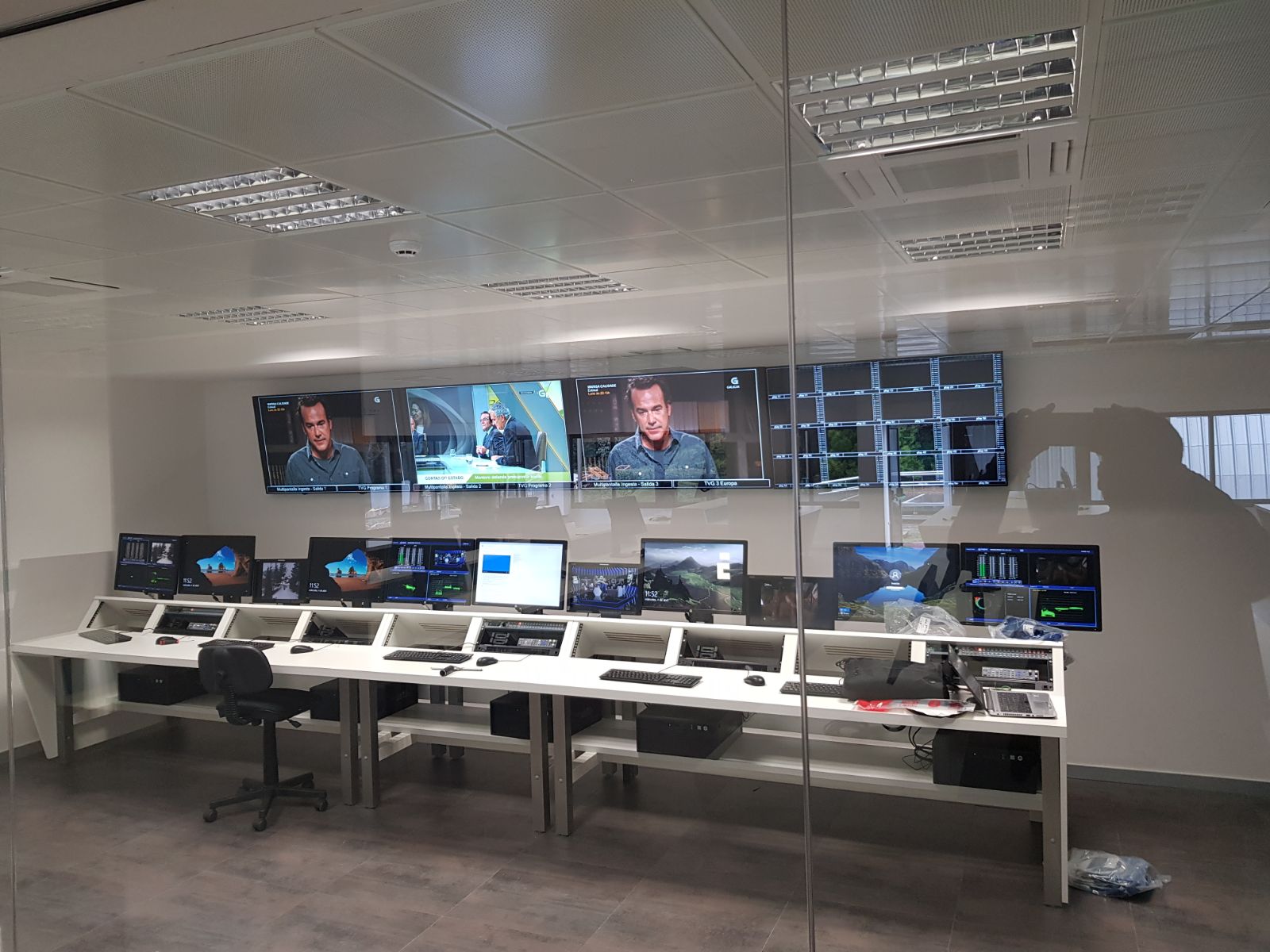IP Migration
Since the ‘90s in which the transition from analog to digital took place, there has been no need for a technological renewal as strong as the change from SDI to IP.
The transition from linear to non-linear took place at the beginning of the 21st century, now we find ourselves immersed in the transition from SDI to IP, the next leap seems clear that it will be in the quality of the signal that will finally be able to use the fiber pathways and IP to achieve it, the HDR, 4K, 8K, 12K …
Nowadays, the areas of IT and Broadcast engineering are completely united in a digital environment where baseband video gradually or radically gives way to video over IP.
For this, they are beginning to implement standards, that reminds us of when the video servers recorded each one in its own format and encapsulation until the MXF arrived and arranged all that mess, although we will talk about that in another article since the MXF took a while to be 100% compatible despite being a standard.

The IP network is a means of transport for the video signal, but a migration to IP implies much more than that. Manufacturers focus on transforming a video signal into an IP digital signal, but network topology and choosing the best manufacturer for each type of installation is crucial.
IP (Internet Protocol) technology, defines a series of rules, so we all understand it, it is a network language (imagine the old Esperanto, or the language before Babel) which has been used for many years on television; by being called the internet, it shouldn’t confuse us since it can refer to an internal network with no exit to the exterior that speaks the same language (IP, the “Esperanto de las máquinas”).
To this day it is possible to make a 100% IP television, as the success story of SIC Portugal, executed by Sony with Telefónica Servicios Audiovisuales as an integrator and cutting-edge technology with CISCO and Lawo.
But if we can´t make an installation from scratch, in order to undertake an IP migration project it is necessary to have hybrid solutions, there are computers that require Gateway interfaces to convert HDSDI or SDI to IP.
The recent 2017 SMPTE standards (ST 2022-6 and -7, and ST 2110) are trying to direct the industry towards an order that allows a better focus on the efforts of manufacturers and customers. These standards for real-time IP, are the drivers of migration in terms of what was lacking to be manufactured, sending live signals.
The transition from SDI to IP, includes in its path to virtualization of machines and subsequent path to the cloud, whether it´s public, hybrid or private, or whether it is as Core or simply as Disaster Recovery.
The goal is clear, for this it is important to have a good integrator, and find the best co-pilot possible. That tailor who makes the made-to-measure suit that a project of renewal and technological migration is.
For manufacturers, developing under IP standards is much cheaper and faster than under SDI, the hardware is no longer exclusive and everything is migrated to a software solution. This fact causes the prices of the products to go down and benefit the final customer. Initially, the amortization costs of the developments make it even more expensive technology than IP, but that trend is changing rapidly.

The next generation of television infrastructure must be focused on IP networks.
Broadcast production is beginning to use new equipment that allows the transport and manipulation of high data rates (HBR-high bit rate), uncompressed signals over an IP network topology. Currently, these teams are very focused on the production of live sports.
The big question that comes up again is whether the video format should be compressed or without compression, or how much compression is appropriate for each type of material.
Latency is the great enemy to beat in the use of IP networks to transfer signals in real-time, the synchronization that allows precision to the SDI frame requires an IP equivalent.
What is Multicast and what is it for?
Multicast is a standard for sending one or more communications in an IP network. A multicast receiver group receives the same packet at multiple destinations and is determined by IP addresses.
Virtualization
For the most conservative a logical step before going to the cloud is virtualization.
TV Virtualization usually refers to the technology that allows taking advantage of physical hardware that through software creates independent machines within that hardware, as “guest”. This increases the efficiency of the machine, distributing its processor, memory, and disk between the different virtual machines that “arise” inside.
Software solutions such as VMWare allow greater optimization of the servers of a Broadcast system. Efficiently sharing hardware resources, processors, memory, storage, etc. Increases productivity and reduces costs, both at the machine level and, not to forget, on the energy one.
SaaS. Software as a Service
Digital transformation goes through correctly assessing the suitability of the software as a service, it is already possible to pay for use, without the need for costly investments on licenses that sometimes do not have a stable and continuous amortization period.
Being able to use on-demand software, only when necessary and in the necessary quantities, allows audiovisual companies to further optimize and upgrade the tools they need to produce television signals, whether linear or non-linear.
Money is saved because the SaaS service allows you to scale or reduce resources vertically depending on the level of use. In addition, it allows geographic mobility since it can be accessed from anywhere with internet access.
It allows organizations to not make strong initial investments in the acquisition of technical infrastructure and spaces, as well as the necessary software.
These technologies allow the Broadcaster to focus on what is important, which is content creation instead of the tool or tools that are constantly evolving.
You cannot understand SaaS without talking about the Cloud, the cloud is also a reality today in the Broadcast world, it is a necessary step in which sooner or later we all just step in.
Disaster Recovery
Around the security of networks, of the increasingly used IT systems in the Broadcast sector and in the face of a total loss of the information of a storage system, recovery solutions against disasters or Disaster Recovery are created.
It is increasingly important to have tools and backup solutions that can give the necessary confidence to an audiovisual production.
If, for example, all the media of a central production storage were lost, chaos would occur through a time that would probably impact on the running order of a channel, but it would also entail a significant economic loss since the assets of a television or production is the content generated, whether raw or edited. All that time, the human resources and the technical ones, if lost, is lost money.
Disaster Recovery solutions are, therefore, as long as we are not working in Blockchain environments, a real and very important requirement to consider.
We should not leave it for later, the time is now, and tomorrow may be too late.
Asier Anitua Valluerca
Business Development Manager
Telefónica Servicios Audiovisuales
